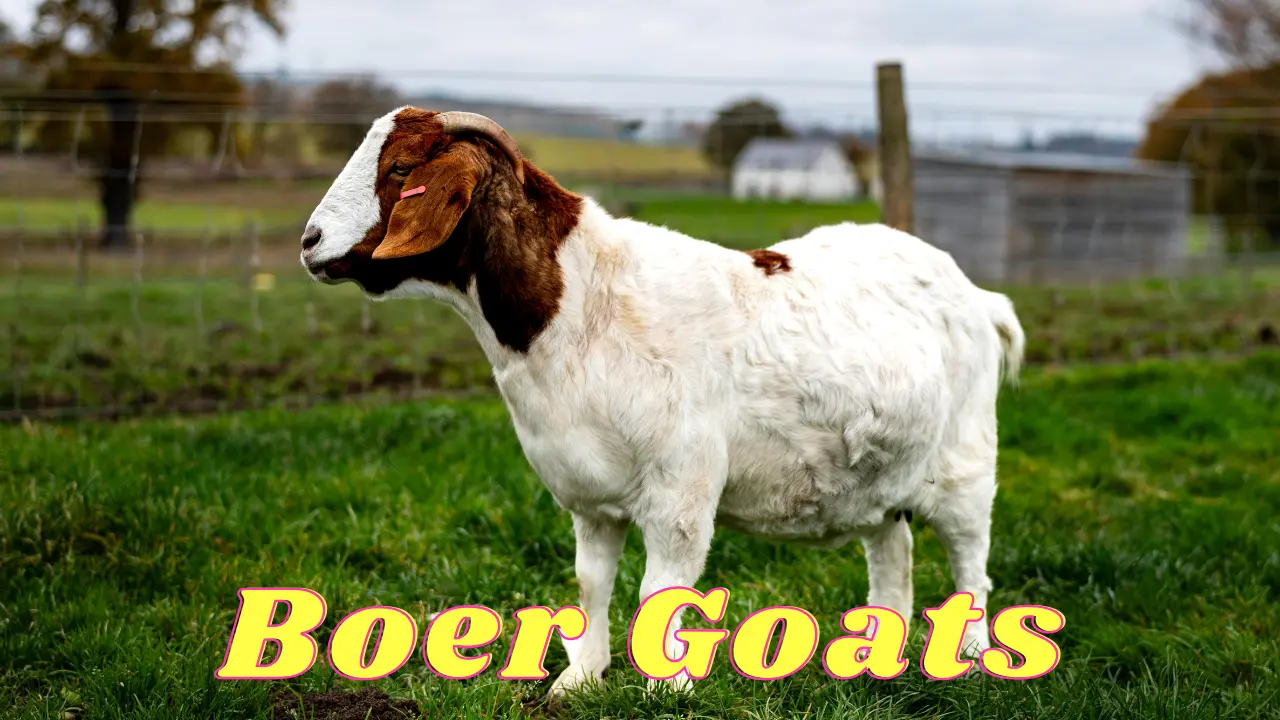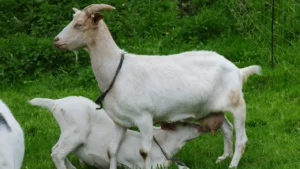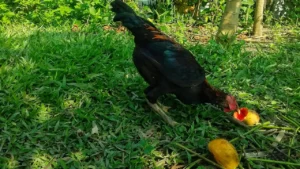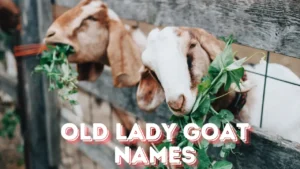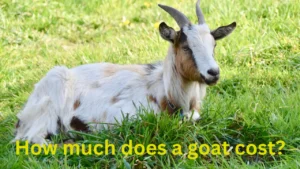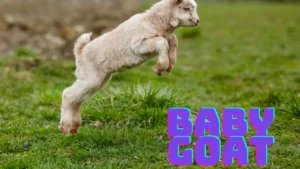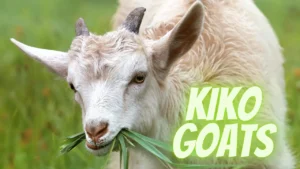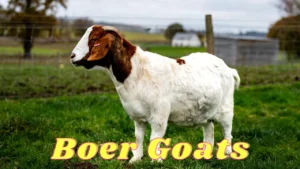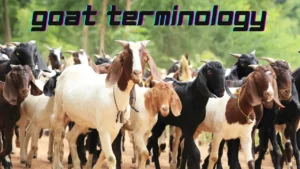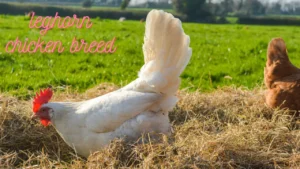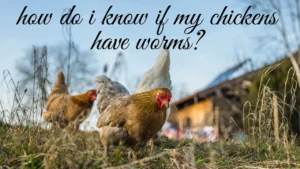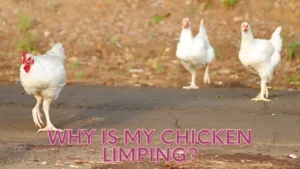The Boer goat also known as the Boerbok is a well-known breed originally selectively bred in the Eastern Cape region of South African around 1920. Farmers in this region focused on developing a hardy goat with strong meat production qualities capable of grazing on the tough thorn veldt and adapting to challenging conditions. Due to these impressive traits, Boer goats were exported to many countries to improve local breeds. Their recognizable appearance with a distinctive red head and white body makes them one of the most popular goats worldwide.
Today, these goats are highly valued for their large size and excellent meat yield making them a top choice in the U.S. and beyond. Farmers appreciate their strong identifying traits, rapid growth and ability to survive in various environments. This article will provide detail on their characteristics and what makes them such a sought-after breed.
History of the Boer goat
The history of Boer goats traces back to the 17th century when Europeans arrived at the Cape and found an established population of goats kept by the Khoikhoi peoples. These animals were small with short speckled coats and were likely brought by migrating groups moving southwards along the eastern coast of Africa. Over the centuries Boer farmers in the Eastern Cape acquired and bred them with Bantu livestock and possibly Angora, European or Indian breeds.
By the 1830s, different varieties and types of these goats were recorded showcasing diverse colors and body structures. As selective breeding continued the Boer developed into a large powerful goat with a convex profile and lop ears showing some resemblance to the Anglo-Nubian breed.
In 1993, Boer goats were introduced to the United States after the restrictions on live imports of South African sheep and goats were lifted. These goats quickly stood apart from other popular breeds due to their highly valued meat recognizable red head and white body, large size and docile nature. Their ability for rapid weight gain and strong frame made them desirable for both meat production and as show goats. This article provides a detailed look at their identifying traits, characteristics and uses.
Boer goat characteristics
Boer goats are easily recognized by their unique features, such as their coat color and robust body size, along with several other traits.
Coat and Color Variations
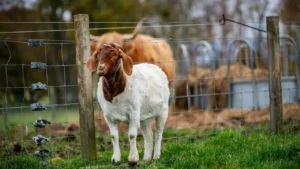
The Boer goat is known for its glossy, short-haired coat which gives it a clean and well-groomed appearance. The recommended colouring for this breed is a white body with a reddish-brown head and a white blaze running down the face. Their pigmented skin helps protect them from harsh weather conditions making them well-suited for different environments.
While this distinct look is traditionally preferred colors vary and it is common to see different variations. Some Boer goats have a black head are all black or even display a dappled pattern with white spots scattered across their body. These unique markings make each goat stand out adding to their appeal among farmers and breeders.
Size of Boer Goats
Boer goats are known as one of the largest goat breeds, with large frames and a deep chest that gives them a powerful appearance. They are recognized for their quick and heavy muscular growth which makes them highly valued in the meat industry.
Bucks (adult males) can reach a body weight ranging from 200 to 340 pounds depending on their age and health. On the other hand a mature doe (female goat) typically weighs between 100 and 175 pounds making them smaller but still substantial in size compared to other goat breeds.
Horn Structure
The horns of Boer goats are large, solid and backward-curving, hugging closely to their heads. They are dark in colour, often giving the goat a bold appearance. The ears are medium size, broad and pendulous adding to the goat’s distinctive look. With a smooth texture and a round shape the horns enhance the overall striking appearance of the breed. These unique features make the Boer goat stand out in both farm settings and show rings.
Ears
When it comes to Boer goats one of their most distinct features is their lop ears that drop down alongside the face creating a unique appearance. Unlike other breeds of goats that have erect ears these lop ears are relaxed and give the Boer goat a calm and friendly look. The ears are not just a physical trait they help in regulating temperature and even pointing up occasionally to catch the breeze in the air making them a sight to behold in the fields.
Temperament
One of the standout traits of Boer goats is their docile and calm nature making them easy to handle. They are often described as even-tempered showing little aggression which makes them perfect for both beginners and experienced goat keepers. Their friendly demeanor makes them a joy to work with even in larger herds.
Hardiness
Boer goats are generally low-maintenance and require less attention compared to other breeds. However, they aren’t as hardy as some other meat goats due to the focus on traits like growth and large-framed size over the years. This focus on size has led to an increase in certain health issues particularly related to internal parasites. When raised on pasture, Boer goats may face more difficulties with parasites compared to goats like Kikos or Savannas.
To overcome these challenges, proper management practices such as rotational grazing can help reduce the impact of internal parasites. While Boer goats are great for meat production due to their large size understanding these challenges is key to maintaining their health and ensuring a sustainable farming environment.
Boer goat uses
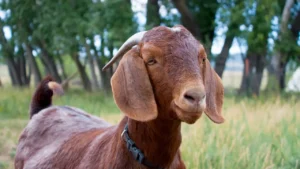
Boer goats are primarily reared for meat thanks to their large size, muscular build, and low-fat content. These goats are an excellent choice for meat production due to their ability to gain 175 g per day under regular conditions and up to 200 g per day when raised in intensive conditions. Their natural ability to exploit low-quality scrubland makes them perfect for grazing on thorn trees, bushes and shrubs.
In addition to their role in meat production, Boer goats are also used in vegetation management in areas like thornveld, where they help control unwanted plant growth. Their robust nature and efficient grazing make them a valuable asset in maintaining the land, as they thrive in harsh environments. With Boer goats farmers can meet their meat needs while also benefiting from their environmental contributions.
Pros And Cons Boer goats
Here’s a table with 5 pros and cons of Boer goats:
|
Pros |
Cons |
| Excellent meat production due to large size and muscular build | Not as hardy as other goat breeds |
| Low-fat content in meat making it healthier | May have more health issues due to intensive breeding focus |
| High weight gain rate (175-200 g/day) | Requires intensive management and care |
| Adaptable to low-quality scrubland and various grazing environments | Prone to internal parasites in certain environments |
| Used in vegetation management to control unwanted plants | Not as suited for harsh, extreme climates as other breeds |
FAQs about Boer Goats
What are Boer goats used for?
Boer goats are primarily reared for meat production due to their large size and muscular build. They are also used for vegetation management in some areas.
How fast do Boer goats grow?
Boer goats typically gain around 175 g per day under normal conditions with the potential for up to 200 g per day in more intensive management.
Are Boer goats easy to handle?
Yes, Boer goats are known for their docile and easy-to-handle nature making them suitable for both beginners and experienced goat keepers.
Do Boer goats require special care?
While Boer goats are relatively low-maintenance they are more susceptible to internal parasites and need proper management practices, such as rotational grazing.
What type of land is best for raising Boer goats?
Boer goats can thrive on low-quality scrubland, grazing on thorn trees, bushes and shrubs making them adaptable to various environments.
Conclusion
Boer goats are an exceptional breed known for their impressive meat production capabilities and unique traits. With their large size, muscular build and low-fat content they are highly sought after for producing high-quality meat. Whether you’re looking for a reliable source of meat or seeking goats for vegetation management Boer goats are adaptable and thrive in various environments from low-quality scrubland to pastures. Their easy-to-handle nature and relatively low-maintenance requirements make them an ideal choice for both novice and experienced farmers.
For those considering adding Boer goats to their farm, it’s essential to provide proper management especially when it comes to controlling internal parasites. With a focus on rotational grazing and a well-maintained environment you can maximize their potential for both meat production and land management. Investing in Boer goats will not only benefit your farm but also contribute to sustainable farming practices.
